


Chess News


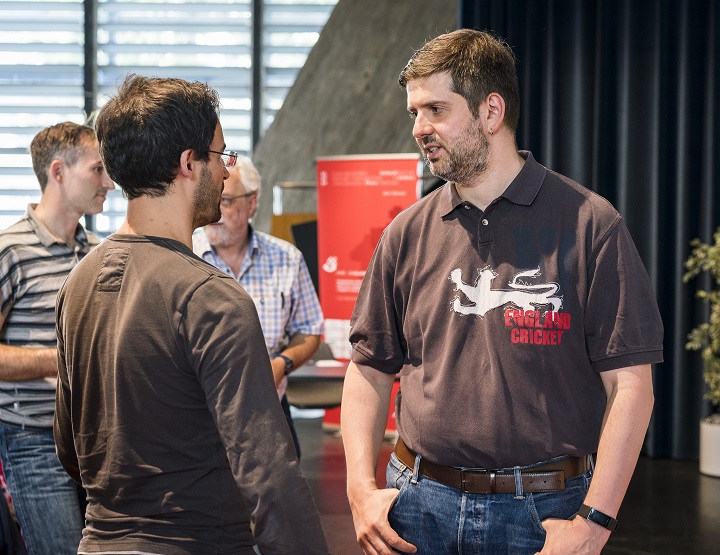


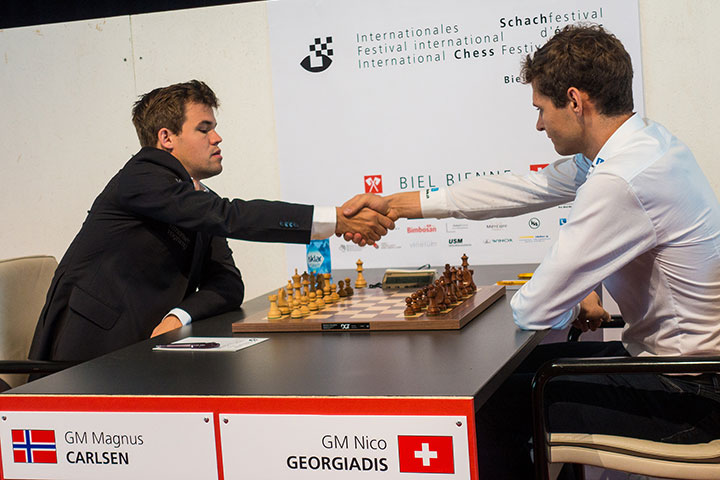

The ninth round saw Magnus Carlsen overestimating his position in his game against Shakhriyar Mamedyarov. The World Champion took too many risks and reached an inferior endgame where at best he would get a draw. Somehow, Magnus could not keep things in control and blundered to lose both the game and the chance to finish first.
This tournament, which can be considered a first preparatory step for the World Championship match against Caruana for Carlsen, started with the Norwegian showing his strength by winning his first two games. The "Carlsen express" slowed down afterwards, however, as he drew six games in a row. Throughout the event, his playing style was rather daring and he showed strong calculation prowess in some of the encounters.
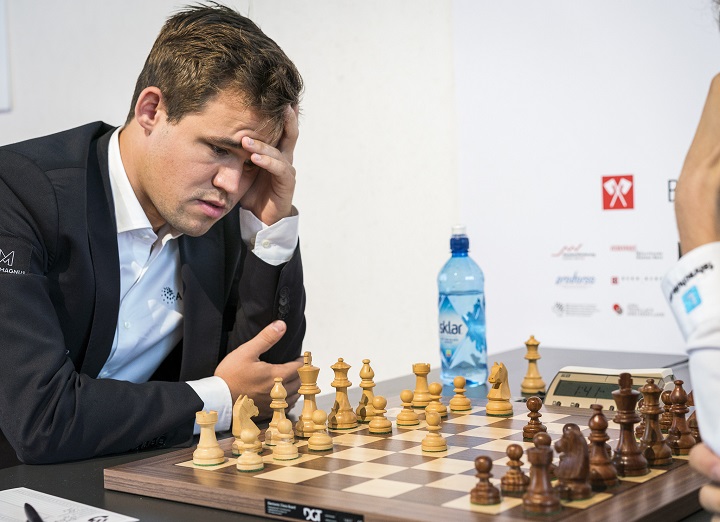
Carlsen finished in clear second place | Photo: Lennart Ootes / Biel International Chess Festival
Against Nico Georgiadis, Magnus exposed his ambitious intentions by playing 2.Na3 after 1.e4 c5. The idea is to follow with c3, d4 and Nc2. By transposition, the players went into an Alapin Variation of the Sicilian.
Black played 6...Qe4+ here and Carlsen answered with 7.Kf1, a rare move that was used for the first time by Corina Peptan in 2007. As a result, the queens left the board subsequently and, after some more pieces were exchanged, the players got to an endgame with rooks and a bishop against a knight. Carlsen was slightly worse due to his doubled pawns on the g-file, but the position was equalised.
The black rook has penetrated the enemy camp; White's pawn structure on the kingside endangers the pawns on the queenside; White should be able to survive.
Nonetheless, Black was the one that let the game slip in one move.
Georgiadis played 46...b3? (46...bxc3 is a draw), probably with 47...Ba3 in mind. However, after 47.Nf3 the knight is ready to jump to d2, where it both protects the b1-square and attacks the c4-pawn. Black resigned.
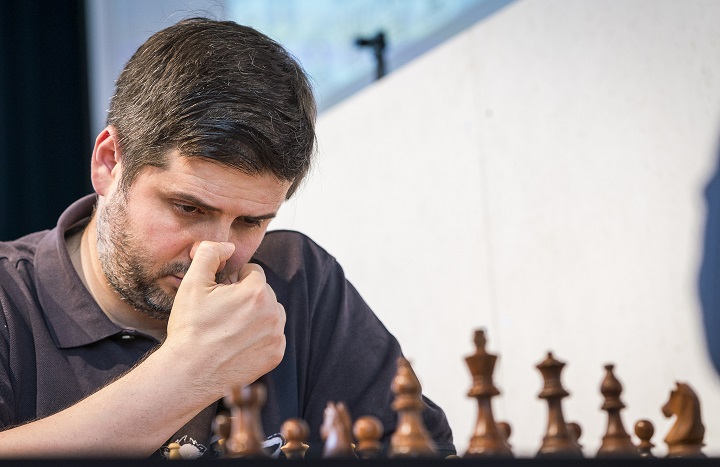
Peter Svidler finished on 5½/10 | Photo: Lennart Ootes / Biel International Chess Festival
After defeating Carlsen, Mamedyarov obtained all that he could have wanted from this tournament, so he allowed himself to look for a draw in the last game.
In his game against Peter Svidler, the queens were exchanged during the early phase of a Mikenas Variation of the English Opening. Slowly but surely, the rest of the pieces left the board at regular intervals. In a drawn rook endgame, a threefold repetition ended the game. Draw in 38 moves.
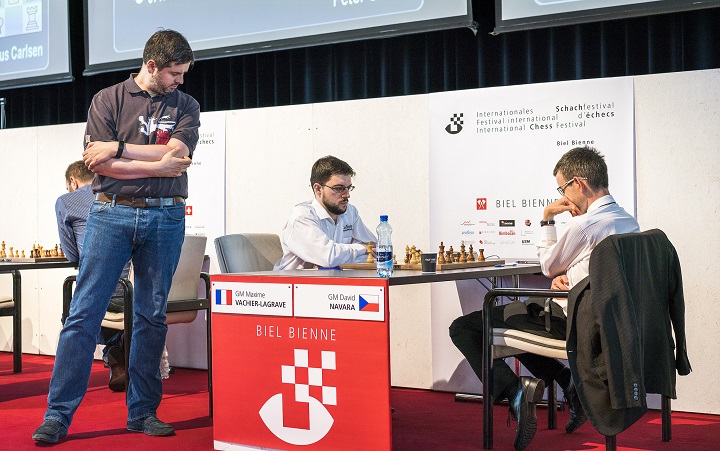
The game kept everybody interested | Photo: Lennart Ootes / Biel International Chess Festival
Finally, in the most exciting game of the round, Maxime Vachier-Lagrave and David Navara explored a nuanced version of the Italian Opening. The old opening that creates highly strategical battles has been examined a lot lately amongst the elite.
Navara played 8...a5 followed by 9...Ne7, a strange continuation in this line. Vachier-Lagrave did not take long to advance his pawn to d4. The players were already in new territory when the Czech grandmaster played a rather innocuous manoeuver — taking his knight to h7 and then to g5 — which gave White a strong attack.
After the exchange of knights on g5, the white queen arrived in h5 and a few moves later White already had a devastating attack, which the French player executed with precision.
Mikhail Golubev analysed MVL's fine win in detail:
Commentary by GM Daniel King and IM Anna Rudolf
Translation from German and additional reporting: Antonio Pereira